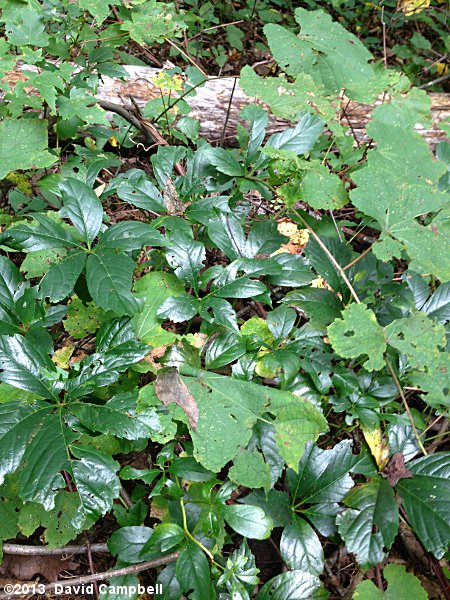
Thicket Creeper is a woody vine native to the northern and western US and Canada was found for the first time in North Carolina last summer by David Campbell, a botanist at the Dr. James F. Matthews Center for Biodiversity Studies, UNC-Charlotte. This appears to be a native occurrence, not an escape from cultivation, even though the nearest known population is far away, in Allegheny Co., Virginia. The nomenclature of this vine is murky — it is not yet clear whether Parthenocissus inserta or Parthenocissus vitacea (Knerr) Hitchcock is the correct name. This vine is similar to the familiar Virginia Creeper (Parthenocissus quinquefolia), but note that the leaves are shiny. Another difference, not seen in this photo, is that the tendrils are twining and do not end in adhesive leaf pads. Virginia Creeper can use its adhesive pads to climb smooth vertical walls; Thicket Creeper can only scramble up vegetation.
Notes from David Campbell: "From a north-east facing slope in Polk County this past summer. Elevation approximately 2000 feet. Soils derived from amphibolite. Associates included Hybanthus concolor, Smilax lasioneura, and Verbesina walteri. Dr. James Matthews was in the field with me when I made these collections, and he feels confident that this is a native occurrence. The locality I found these plants in was a fairly pristine site... No evidence of disturbance, no non-native species in the immediate vicinity. On the specimens I vouchered, there are no disks present on the tendrils (which is a diagnostic trait for P. vitacea), in addition to the extremely glossy leaves."
Polk Co., NC 9/2/2013.